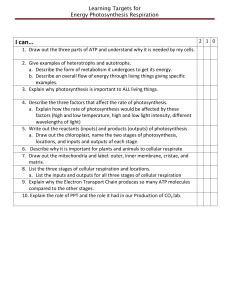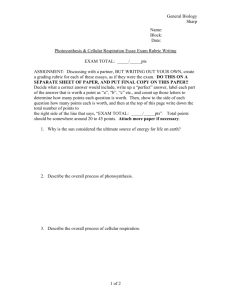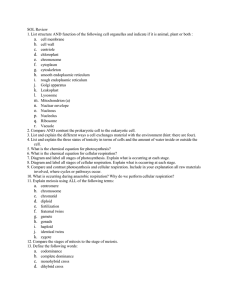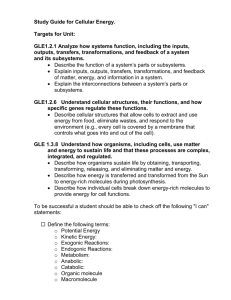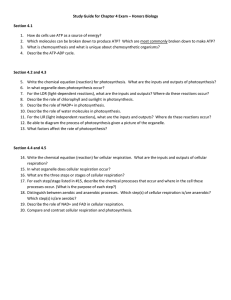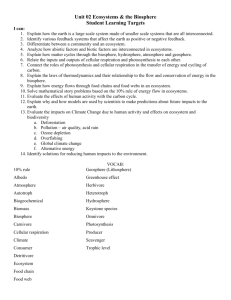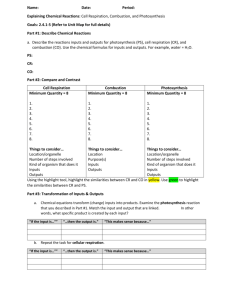Midterm Review of Learning targets - Community Unit School District
advertisement
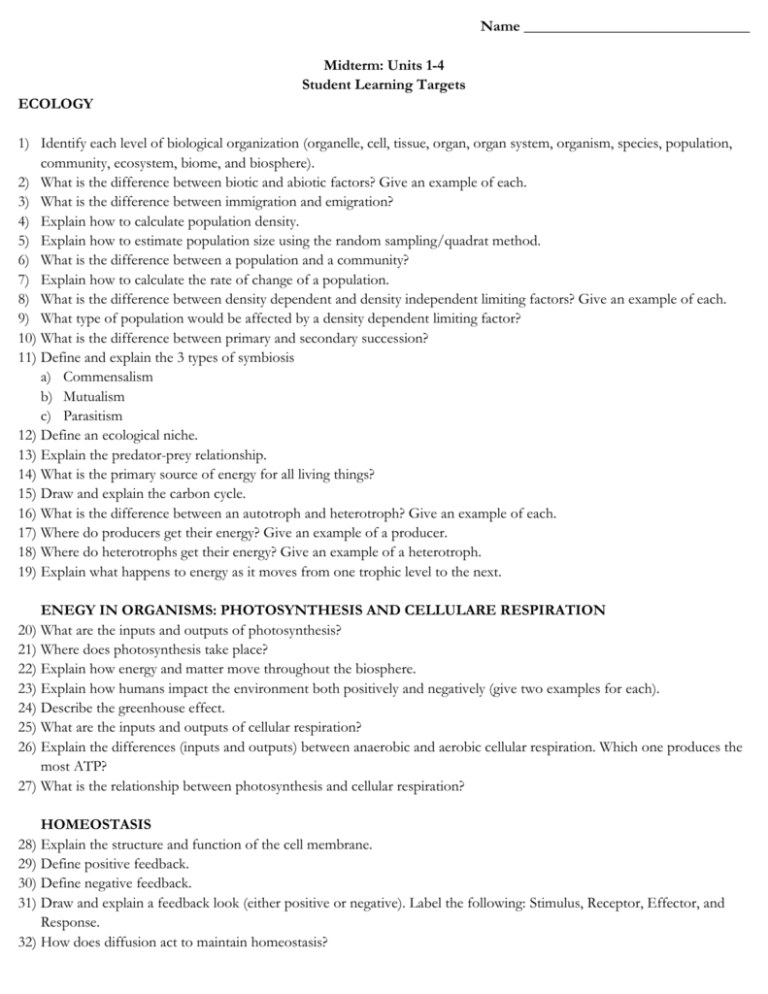
Name ______________________________ Midterm: Units 1-4 Student Learning Targets ECOLOGY 1) Identify each level of biological organization (organelle, cell, tissue, organ, organ system, organism, species, population, community, ecosystem, biome, and biosphere). 2) What is the difference between biotic and abiotic factors? Give an example of each. 3) What is the difference between immigration and emigration? 4) Explain how to calculate population density. 5) Explain how to estimate population size using the random sampling/quadrat method. 6) What is the difference between a population and a community? 7) Explain how to calculate the rate of change of a population. 8) What is the difference between density dependent and density independent limiting factors? Give an example of each. 9) What type of population would be affected by a density dependent limiting factor? 10) What is the difference between primary and secondary succession? 11) Define and explain the 3 types of symbiosis a) Commensalism b) Mutualism c) Parasitism 12) Define an ecological niche. 13) Explain the predator-prey relationship. 14) What is the primary source of energy for all living things? 15) Draw and explain the carbon cycle. 16) What is the difference between an autotroph and heterotroph? Give an example of each. 17) Where do producers get their energy? Give an example of a producer. 18) Where do heterotrophs get their energy? Give an example of a heterotroph. 19) Explain what happens to energy as it moves from one trophic level to the next. ENEGY IN ORGANISMS: PHOTOSYNTHESIS AND CELLULARE RESPIRATION 20) What are the inputs and outputs of photosynthesis? 21) Where does photosynthesis take place? 22) Explain how energy and matter move throughout the biosphere. 23) Explain how humans impact the environment both positively and negatively (give two examples for each). 24) Describe the greenhouse effect. 25) What are the inputs and outputs of cellular respiration? 26) Explain the differences (inputs and outputs) between anaerobic and aerobic cellular respiration. Which one produces the most ATP? 27) What is the relationship between photosynthesis and cellular respiration? HOMEOSTASIS 28) Explain the structure and function of the cell membrane. 29) Define positive feedback. 30) Define negative feedback. 31) Draw and explain a feedback look (either positive or negative). Label the following: Stimulus, Receptor, Effector, and Response. 32) How does diffusion act to maintain homeostasis?
